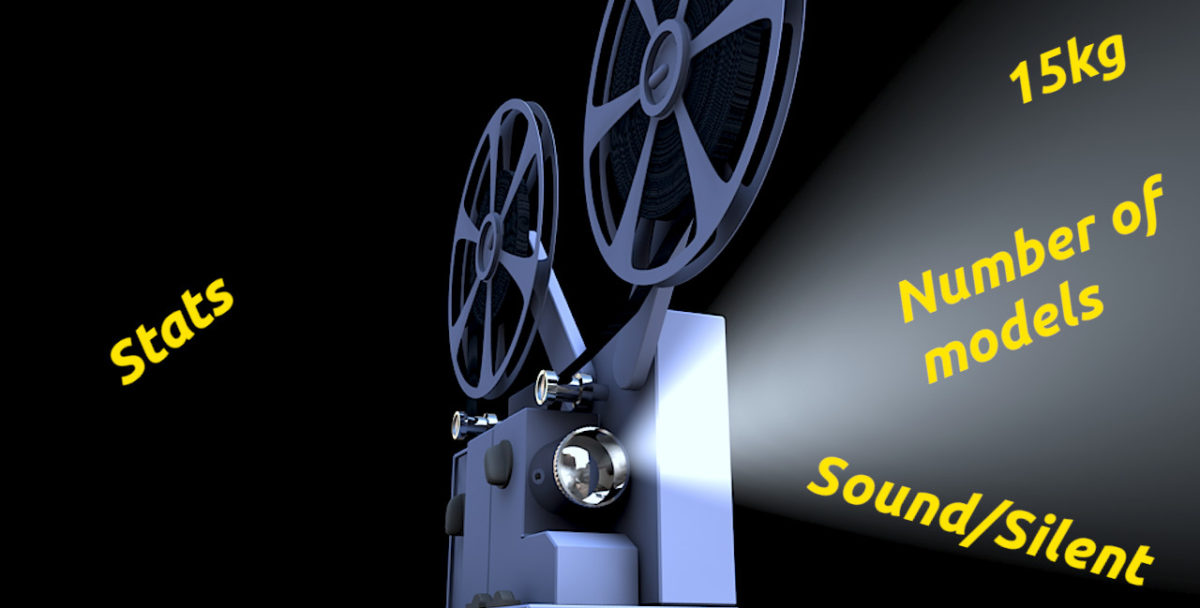As we announced in February, we started adding projectors to the database. Now we have reached 1590 projectors.
That’s all the projectors from the old (now defunct) site super8data.com. From here the work will continue to extend and improve the data. For example, we have started adding more pictures, manuals and advertisements to projectors. And we also seek to fix any incorrect information that might be in the data. This is, like the film data, very much a living project under constant improvement.
The data is not static unstructured data (that is, just a text file), but rather structured data that are more easily maintained. That opens up many possibilities like:
- Search faceting (filtering on things like reel size etc).
- Attribute grouping when viewing a projector (like all audio related data being shown together).
- Comparing of projectors through our compare functionality.
- Retrieving statistics
And to show what structured data can do, let’s look at the last point in the list; statistics. We have a lot of projectors, but the list is not in any way complete. I can’t say how much or little we are missing, although I expect the majority of projectors to be there. Still, even though it is not complete, it gives some interesting insight of the projectors out there. Let’s take a look at some aspects of projectors.
Bear in mind that this is number from different type of projectors, and not the number of sold models. We can indeed expect some models to sell in high quantities, and others to have sold little. So these numbers represent the options that were out there, not all sold projectors.
Gauge
Let’s start with film gauges. Not surprisingly there are not many Standard 8 projectors, as both the old super8data and our super8database is focusing on Super 8. Only a few projectors are Standard 8 only, and knowing there are loads of Standard 8 only projectors out there, this is not representative at all, and it was never intended to be that. So those being Standard 9 only in this database has slipped past the gate. The Super 8 side and dual gauge projectors, though, are probably a lot more representative to what was produced during the years.
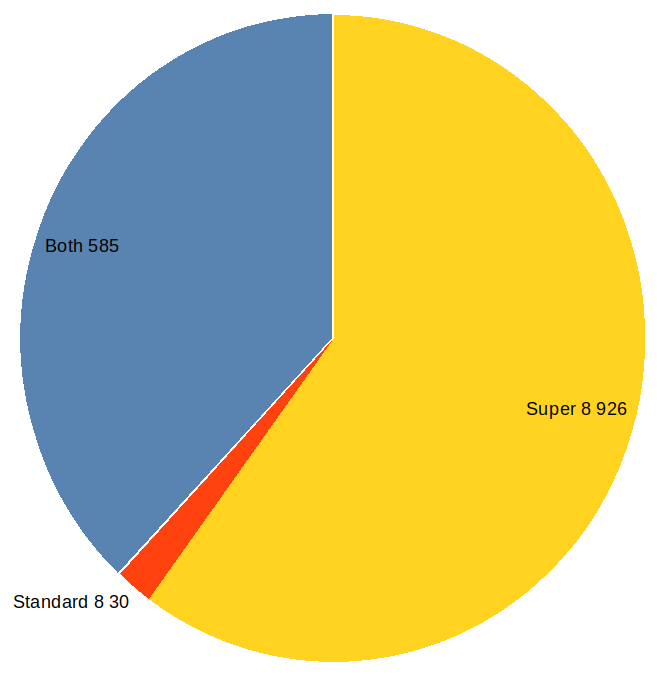
But what we can look at that is probably quite representative, is the distribution of Super 8 only compared to dual gauge projectors. I was surprised to find that there were a lot more dual gauge projectors than I expected. The reason might be quite simple: The popular projectors today amongst collectors are probably not very representative to what was produced during the years, and used to be in family homes.
My theory is that those of us who still watch Super 8 films tend to stick to the better and more expensive later models today. When we read in forums and Facebook groups, we often hear about the more expensive models when collectors have questions.
‟The popular projectors today amongst collectors are probably not very representative to what was produced during the years, and used to be in family homes.”
This skews the impression of what was common back in the day. At least for someone at my age who was quite young in the 80s and didn’t have any idea of what was common back then. I grew up in a family with only home movies. They were all silent, and we didn’t need any fancy projector. And this was probably the situation for many owners of projectors back then.
Reel size
And this theory is supported by the next chart about max reel sizes for the projectors. When we read in forums, it seems like a lot of us have a 1200′ projector. And I doubt anybody has any less than at least one 600′. How many collectors have a 400′ projector as the biggest option?
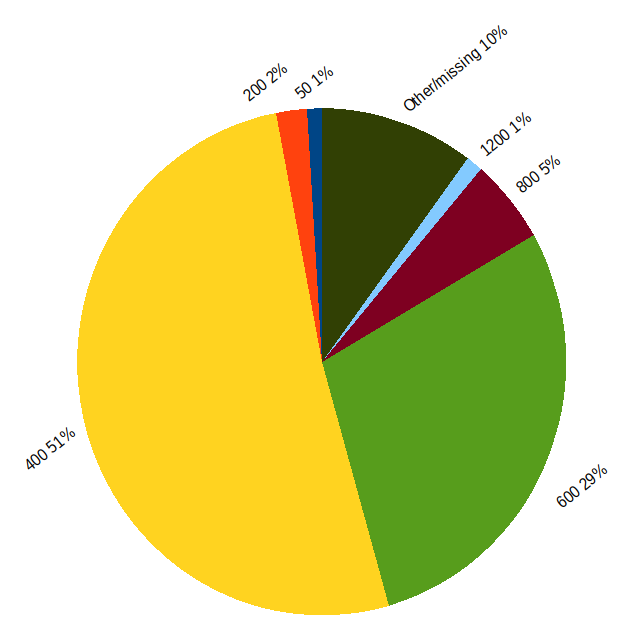
From the data we see that only 1% of the projectors had 1200′. Over half of them had 400′. No wonder most movies where distributed on a 400′ and even the later Derann released on no bigger than a 600, as far as I know. I did expect the 1200’s to be few, but I must say I was a bit surprised to see it was as low as 1%.
Again, this does not represent the number of sold projectors, but still the numbers are interesting.
Sound
The next chart shows an aspect I have waited to see. How many of the projectors had sound and how many were silent:
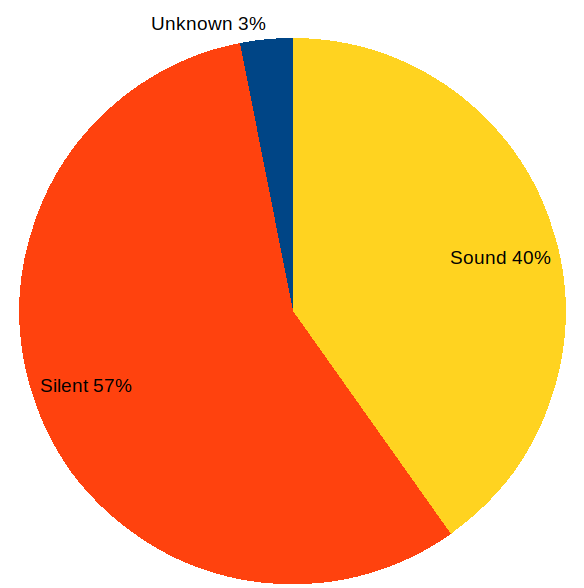
And of those with sound, how many had support for optical or stereo prints?
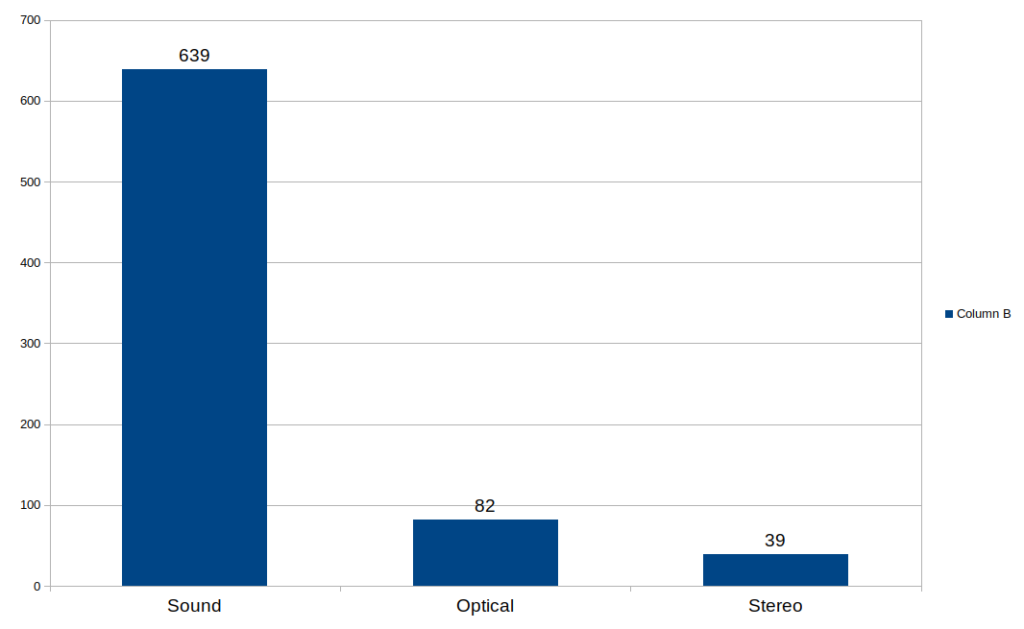
In this chart, the projectors might be counted in more than one bar. There are projectors with both stereo and optical support.
Brands
And then we have the brands. here we have counted the number of models per brand.
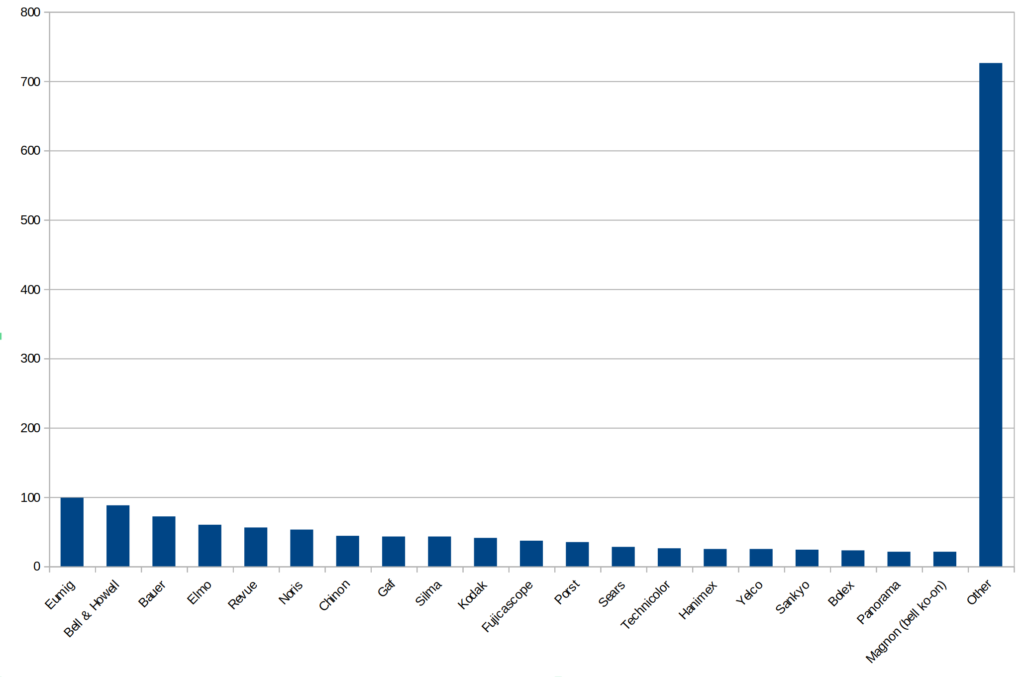
This chart surprised me a lot. There is just so many brands. While working on the data, I noticed how many of the projectors were actually the same, just released under different brands. I can’t say how many were different brands owned by the same company producing projectors, and how many were produced for other companies. Either way, we have a lot of brands with just a very few different types of projectors out there.
If we set a limit to at least 20 models, the chart looks like this:
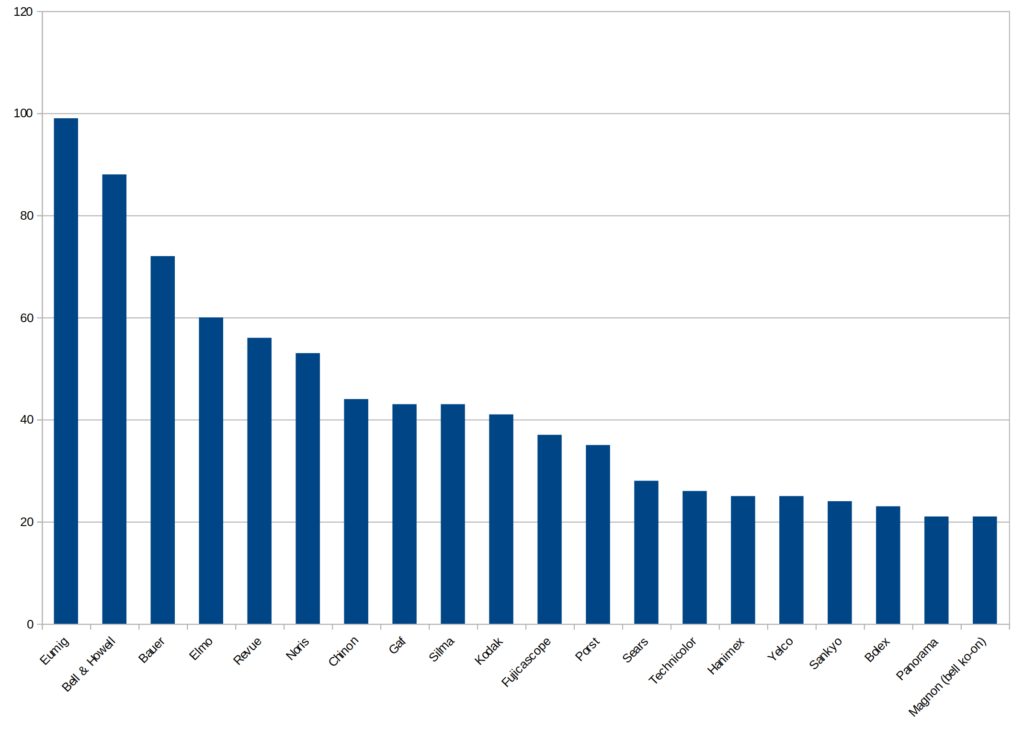
Again, this does not represent the number or produced projectors, only number of different models.
Manufacturers
And now let’s look at the manufacturers. We have info about manufacturer for 87% of the models. Let’s look at how many models were produced by each of them, where they produced at least 10:
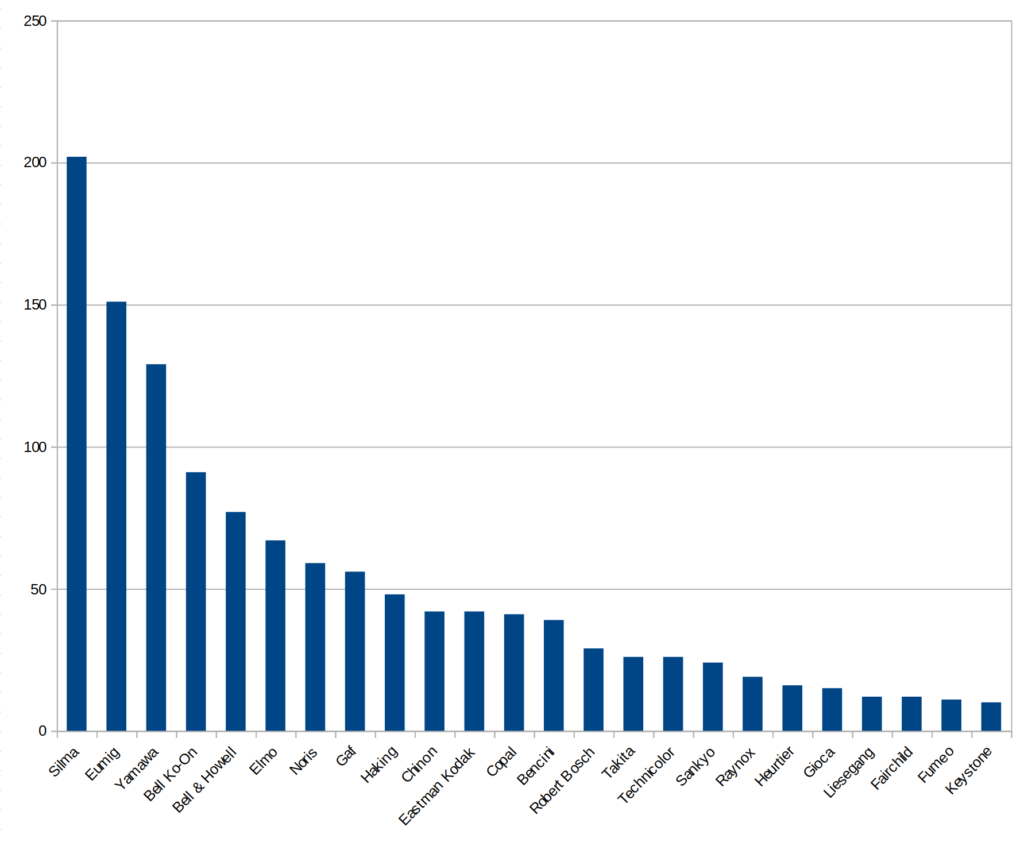
I did not expect this either. But looking into the numbers, this is probably caused by models being sold with many different brand names, and thus being a bit different. Some manufacturers seems to have had this as a business selling a lot of versions of the same type.
Weight
Projectors are heavy. But how does the weights distribute?
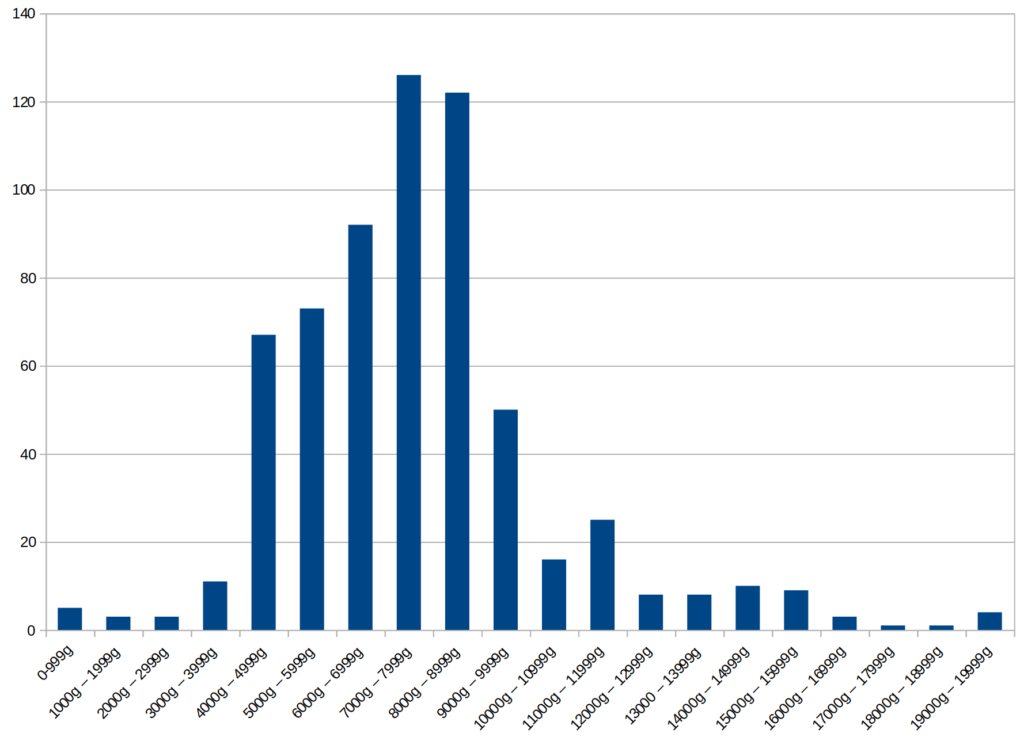
Most are within 4-10kg. The highest interval are between 7-8 kg.
Closing words
I hope you have learned something new. At least I did while working on this. I plan to do some similar things with films later on.
If you want to play with numbers, all the data can easily be downloaded for all the films with the export to spreadsheet functionality. I plan to make the same for projectors, so you can play with all the data too.
